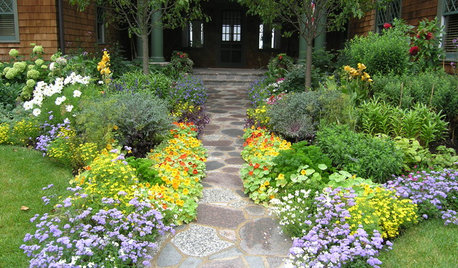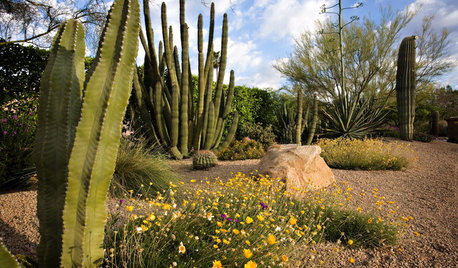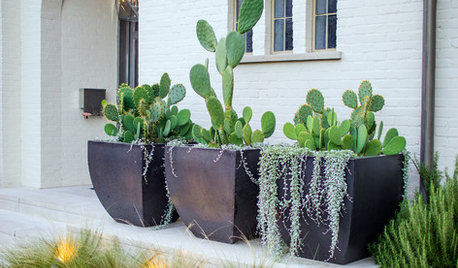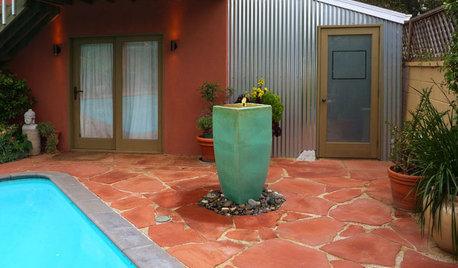Cactus IDs please
binki
17 years ago
Related Stories

HOUSEPLANTSMother-in-Law's Tongue: Surprisingly Easy to Please
This low-maintenance, high-impact houseplant fits in with any design and can clear the air, too
Full Story
GARDENING GUIDESPathway Plantings That Please the Senses
Add some color, life and intrigue beside your sidewalk with these 7 suggestions
Full Story
GARDENING GUIDES10 Creative Ideas for Cactus and Succulent Gardens
Arrange cactuses and succulents amid salvaged treasures, against a vibrant painted wall or in terraced beds
Full Story
SOUTHWEST GARDENINGTall Cactuses Bring Drama to Southwestern Gardens
See how 5 columnar cactuses add a striking design element to warm-weather gardens, courtyards and entries
Full Story
CONTAINER GARDENSCactus and Succulent Containers Are Ideal for Hot, Sunny Spots
Bring on the sun with these heat-loving succulent container gardens
Full Story
HOME OFFICESQuiet, Please! How to Cut Noise Pollution at Home
Leaf blowers, trucks or noisy neighbors driving you berserk? These sound-reduction strategies can help you hush things up
Full Story
BATHROOM DESIGNUpload of the Day: A Mini Fridge in the Master Bathroom? Yes, Please!
Talk about convenience. Better yet, get it yourself after being inspired by this Texas bath
Full Story
BEFORE AND AFTERSMore Room, Please: 5 Spectacularly Converted Garages
Design — and the desire for more space — turns humble garages into gracious living rooms
Full Story
TILEMoor Tile, Please!
Add an exotic touch with Moroccan tiles in everything from intricate patterns and rich colors to subtle, luminous neutrals
Full Story
DECORATING GUIDESPlease Touch: Texture Makes Rooms Spring to Life
Great design stimulates all the senses, including touch. Check out these great uses of texture, then let your fingers do the walking
Full Story





binkiOriginal Author
hablu
Related Professionals
Ballwin Landscape Architects & Landscape Designers · South Elgin Landscape Architects & Landscape Designers · Pelham Landscape Contractors · Burien Landscape Contractors · Cary Landscape Contractors · Eatontown Swimming Pool Builders · Jericho Swimming Pool Builders · Visalia Swimming Pool Builders · Clark Window Contractors · East Renton Highlands Window Contractors · Holly Hill Window Contractors · Jensen Beach Window Contractors · Kuna Window Contractors · Muttontown Window Contractors · Poinciana Window Contractorsshrubs_n_bulbs
binkiOriginal Author
shrubs_n_bulbs
binkiOriginal Author
binkiOriginal Author
shrubs_n_bulbs
binkiOriginal Author
shrubs_n_bulbs
shrubs_n_bulbs
binkiOriginal Author
binkiOriginal Author